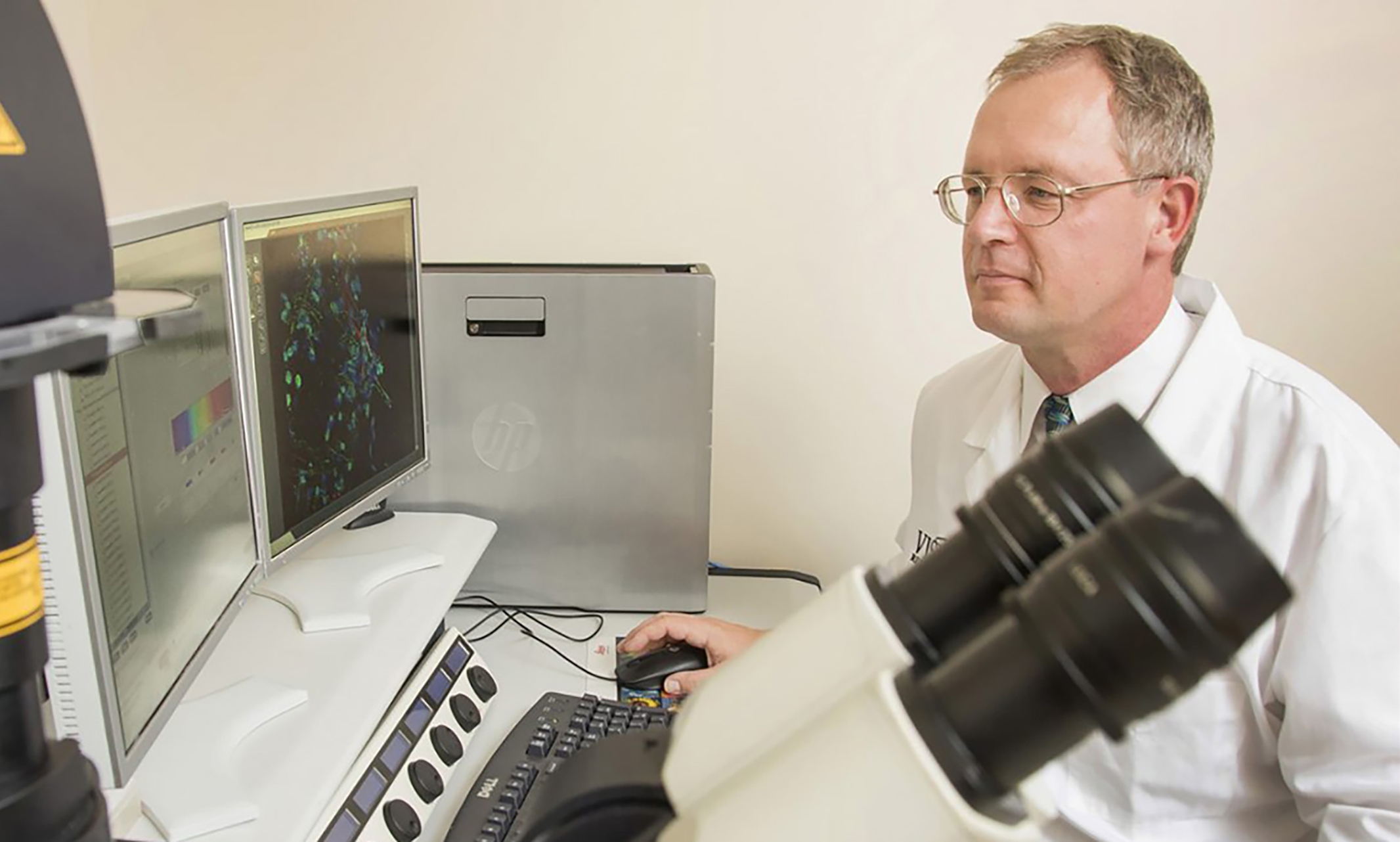The National Institutes of Health (NIH) has awarded the UMKC Vision Research Center a new $120,399 grant that promotes the training of researchers from diverse backgrounds as part of ongoing research projects to develop novel glaucoma therapies.
Funded through the NIH’s National Eye Institute (NEI), the new funding is part of a larger NIH initiative to enhance the diversity of the research workforce. It will aid in recruiting and supporting students, postdoctorates, and eligible investigators from diverse backgrounds. It will also including those from racial and ethnic groups that have been shown to be underrepresented in health-related research.
“We are pleased to receive this support from the NIH,” said Peter Koulen, Ph.D., director of the Vision Research Center. “This funding is a substantial contribution to our mission to provide a more diverse workforce in biomedicine and the overall mission to discover new and improved treatments and therapies for vision health world-wide.”
The funding is part of Koulen’s NEI-supported program exploring novel therapeutic strategies to preserve the viability and function of the nerve cells of the retina affected by glaucoma. The research targets a novel mechanism of nerve cell protection utilizing intracellular calcium signaling as a drug target to treat degeneration of nerve cells in glaucoma.
“The new award is part of research that will allow us to generate data needed for the development of novel glaucoma drugs to complement existing therapies targeting abnormally high pressure in the eye,” Koulen said.
Glaucoma is a major cause of irreversible vision loss and blindness in the United States and worldwide. The disease causes degeneration in the retina and optic nerve, which connects the eye to the brain. Preventing the death of these cells is currently the only feasible way to prevent vision loss due to glaucoma.
Koulen and his team at the Vision Research Center received a $1.16 million NIH grant earlier this year to investigate a mechanism that allows nerve cells to communicate effectively and could lead to the development of such new treatments for glaucoma. He is also part of an innovative $1.5 million project exploring a novel tissue-preservation method that could help meet far-reaching clinical needs in ophthalmology and other fields of medicine
That research is focused on alternative strategies directly targeting the damaging effects of the disease on the retina and optic nerve.
“Just like elevated blood pressure predisposes patients to stroke, high pressure inside the eye is a predisposing factor for glaucoma,” said Koulen, professor of ophthalmology and director of basic research at the Vision Research Center. “There are currently several therapies available to patients to reduce abnormally high eye pressure, but when these therapies fail or cease to be effective, glaucoma and the accompanying vision loss continue to progress.”
Koulen’s project will determine how to boost the cell-to-cell communication that retinal nerve cells use to defend themselves from disease and injury. The hope is this will protect these cells from the damaging effects of glaucoma.
If successful, Koulen’s research will result in new drug candidates that would contribute to “neuroprotection” as a strategy to treat and prevent glaucoma.
New therapies could potentially act in concert with current eye pressure lowering drugs. Other areas of medicine, such as cancer treatment, have effectively employed the concept of using complementary drug action in combination therapies.

